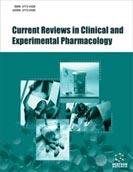Abstract
Background: Autosomal dominant polycystic kidney disease (ADPKD) may coexist with other genetic disorders, such as tuberous sclerosis, when deletion in TSC2/PKD1 genes occurs. Recently, the effect of tolvaptan has been explored in ADPKD patients alone, but its safety and efficacy on TSC2/PKD1 contiguous gene syndrome are unknown.
Case Presentation: This report describes the case of an asymptomatic patient with TSC2/PKD1 contiguous gene syndrome that fulfills the imaging criteria for initiating the treatment with tolvaptan. After twelve months, the patient did not exhibit severe adverse effects and blood pressure control improved.
Conclusion: In this TSC2/PKD1 contiguous gene syndrome single case report, tolvaptan was safe and well-tolerated. More extensive experimental studies are needed to deeply understand the therapeutic implications of vasopressin V2-receptor inhibition in the TSC2/PKD1 contiguous gene syndrome patients.
Keywords: Autosomal dominant polycystic kidney disease, tuberous sclerosis, tuberous sclerosis complex, TSC2/PKD1 contiguous gene syndrome, tolvaptan, vasopressin antagonist.
Graphical Abstract
[http://dx.doi.org/10.1093/ndt/gfu186] [PMID: 25165191]
[http://dx.doi.org/10.1016/S0272-6386(83)80044-4] [PMID: 6846334]
[http://dx.doi.org/10.1016/0092-8674(94)90137-6] [PMID: 8004675]
[http://dx.doi.org/10.1038/ng.2715] [PMID: 23892607]
[http://dx.doi.org/10.1016/j.ajhg.2016.05.004] [PMID: 27259053]
[http://dx.doi.org/10.1126/science.272.5266.1339] [PMID: 8650545]
[http://dx.doi.org/10.1016/S0140-6736(08)61279-9] [PMID: 18722871]
[http://dx.doi.org/10.1590/abd1806-4841.20186972] [PMID: 29924239]
[http://dx.doi.org/10.1159/000320891] [PMID: 21071977]
[http://dx.doi.org/10.1007/s00467-014-3027-9] [PMID: 25533384]
[http://dx.doi.org/10.1007/s11547-015-0572-7] [PMID: 26219723]
[http://dx.doi.org/10.1056/NEJMoa1205511] [PMID: 23121377]
[http://dx.doi.org/10.1056/NEJMoa1710030] [PMID: 29105594]
[http://dx.doi.org/10.1681/ASN.2013101138] [PMID: 24904092]
[http://dx.doi.org/10.1093/ndt/12.9.1900] [PMID: 9306341]
[http://dx.doi.org/10.1177/1066896908319578] [PMID: 18611938]
[http://dx.doi.org/10.1136/bcr-2017-220766] [PMID: 28978585]
[PMID: 17268401]
[http://dx.doi.org/10.3389/fped.2018.00065] [PMID: 29623269]
[http://dx.doi.org/10.1038/sj.ki.5001853] [PMID: 17003820]
[http://dx.doi.org/10.1086/514888] [PMID: 9382094]
[http://dx.doi.org/10.1093/hmg/ddn325] [PMID: 18845692]
[http://dx.doi.org/10.1093/hmg/ddp149] [PMID: 19321600]
[http://dx.doi.org/10.1186/s12881-015-0185-y] [PMID: 26077033]
[http://dx.doi.org/10.1371/journal.pone.0009239] [PMID: 20169078]





























